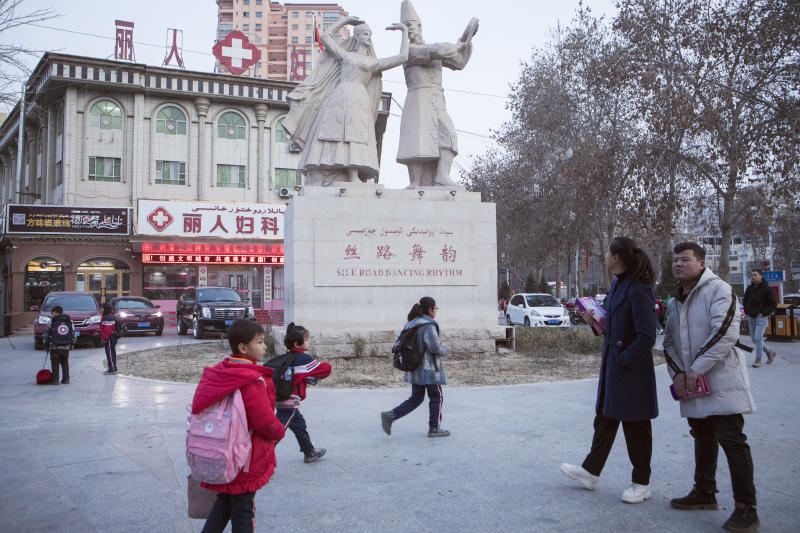China fights back on Xinjiang narrative
Sign up now: Get insights on Asia's fast-moving developments

A photo taken on Dec 11, 2019, shows children leaving school in Hotan, in China's Xinjiang province.
PHOTO: NYTIMES
Follow topic:
BEIJING - Chinese state media outlets have come out in full-throated condemnation of the latest foreign reporting on detentions in Xinjiang, as Beijing tries to wrest control of the media narrative on its policy to build re-education camps, which it calls vocational training centres, in its far-western region.
Both its English and Chinese-language outlets ran prominent stories over the weekend to rebut a New York Times article last Saturday (Dec 28) that said the ruling Chinese Communist Party (CCP) had placed nearly half a million children from the region into boarding schools to "assimilate and indoctrinate" them from an early age".
The story cited a 2017 Ministry of Education document showing authorities planned to operate at least one such school in each of Xinjiang's 800 townships by the end of next year.
Ethnic minority students in Xinjiang are often forced to enrol because authorities had detained their parents and relatives, the Times added, noting that as many as a million ethnic Uighurs and Kazakhs have been held to date.
But the official China Daily newspaper said yesterday (Dec 30) that these figures were seriously flawed as they were "derived from dubious studies", even as it did not reveal any official numbers. Beijing has declined to release any figures on those detained in Xinjiang.
Instead, the paper cited a review of data by left-leaning US news portal The Grayzone to show that claims that millions have been detained was based on a small number of interviews done by the Network of Chinese Human Rights Defenders, an organisation the newspaper said was backed by the US government.
Nationalistic tabloid Global Times was more blunt, calling the latest report "shameless".
"This is an article full of prejudice and malicious interpretation, a typical example of the western mainstream media lying to the public," it wrote in an editorial in Chinese on Sunday.
Separately, state broadcaster CGTN aired a four-minute segment to counter what it called Western propaganda on Xinjiang.
Between scenes of laughing locals in taqiyah (skullcaps) strumming lutes and children playing in a public square in Kashgar city, the anchor accused the Western press of spreading misinformation, while an interviewee said her 10 months in an "education centre" had helped her perfect her Mandarin and pick up sales knowledge.
"It is difficult to see the full picture of a region as diverse and complex as Xinjiang in the first place, and this Western propaganda doesn't make things much easier," said the CGTN anchor.
Experts noted that the latest media offensive comes as Beijing has taken a more combative stance against foreign reporting of human rights issues in China, which remain a sensitive topic.
China's Ministry of Foreign Affairs, for instance, used a press briefing earlier this month to accuse overseas outlets of selective deafness and blindness when it came to Xinjiang.
Political observer Jo Kim said Chinese officials have found it perplexing and frustrating why the US and European Union countries largely sympathise with the Uighur separatist movement and seldom address the terrorist attacks that China has suffered at the hands of extremists, such as the Urumqi riots in 2009 and another in Kunming in 2014.
This is likely why state television released two documentaries this month that showed past violence by political extremists in Xinjiang, he said.
But without strong, verifiable evidence to disprove accusations of rights abuses or show how the vocational centres purge extremism, these efforts "fall short of being good propaganda", he wrote in The Diplomat.
"China more often combats criticisms aggressively but very obliquely, by demanding the 'biased and hostile West' to 'respect its sovereignty' rather than elaborating on its policy practices," he added. "This tactic fails to form a narrative that may possibly foster an understanding of Beijing's interests."

